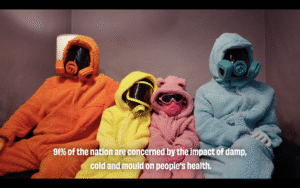Real average pay fell by 1.3% in February, with a far deeper squeeze predicted in coming months, despite unemployment matching its lowest rate in nearly half a century, says the Resolution Foundation.
According to the latest ONS labour market statistics, the UK jobs market continued to tighten in early 2022, with vacancies hitting a record high, unemployment falling to 3.8% – matching its lowest level since December 1974 – and short-to-medium-term unemployment falling to a record low.
However, the overall size of the labour market remains smaller than pre-pandemic, with economic inactivity increasing again to 21.4% – suggesting that more people are leaving the labour market.
The current fall in real wages is not projected to end until late 2023 and will leave average wages no higher than in 2007.
Nye Cominetti, Senior Economist at the Resolution Foundation, said: ‘Soaring inflation is casting a big shadow over an otherwise buoyant labour market. Vacancies are at record highs, while redundancies and unemployment are close to record lows.
‘But while this positive news on the jobs front is leading to higher wages, it is not enough to prevent an already painful pay squeeze that will get worse in the months ahead.
‘Everyone will be affected by the UK’s latest pay squeeze, which isn’t expected to end until late 2023. And with the current inflation being driven by soaring energy bills, it will be lower-incomes families feeling the squeeze the most.’
Real regular pay fell by 1.3% in the year to February. Public sector pay fell by 3.8% in real terms, compared to a 0.8% fall in the private sector. The Resolution Foundation argued that this gap is likely to make the coming period of public sector pay restraint even more challenging.
The Foundation adds that the scale of Britain’s pay squeeze is likely to be even more severe than the headline data suggests, with up to a quarter of current pay growth accounted for by the effects of high furlough rates in early 2021 (which, by depressing pay, boost growth rates 12 months later).
Photo by Eduardo Soares
















Leave a Reply